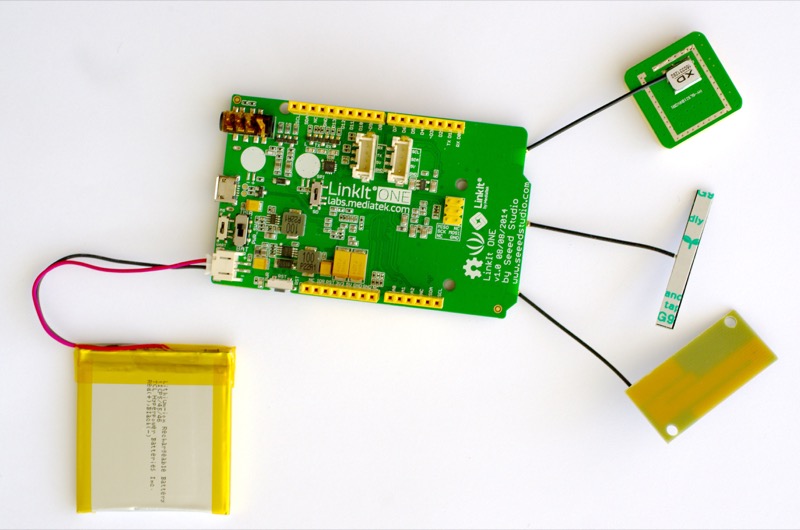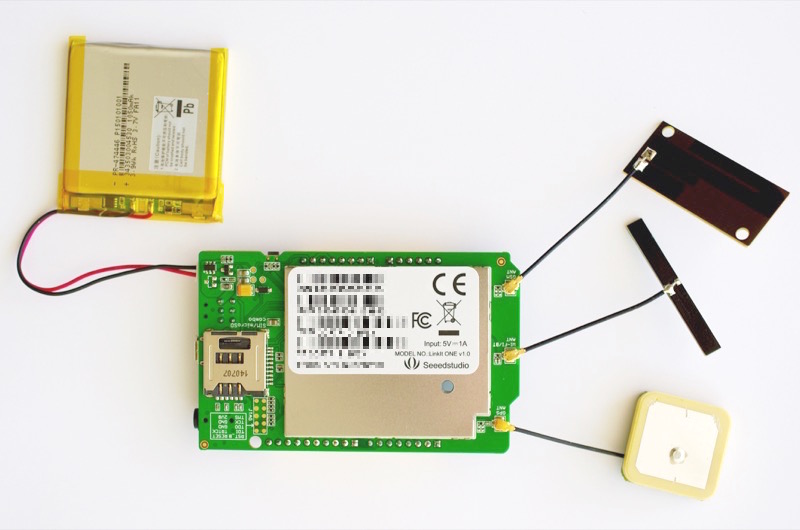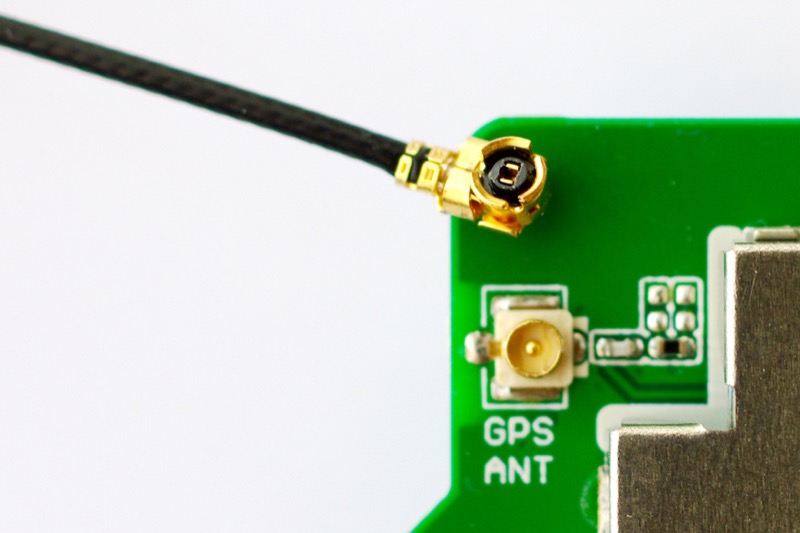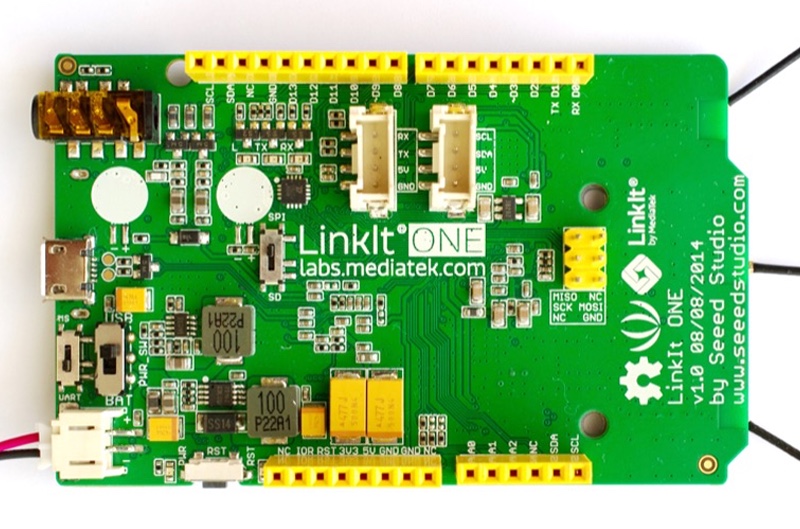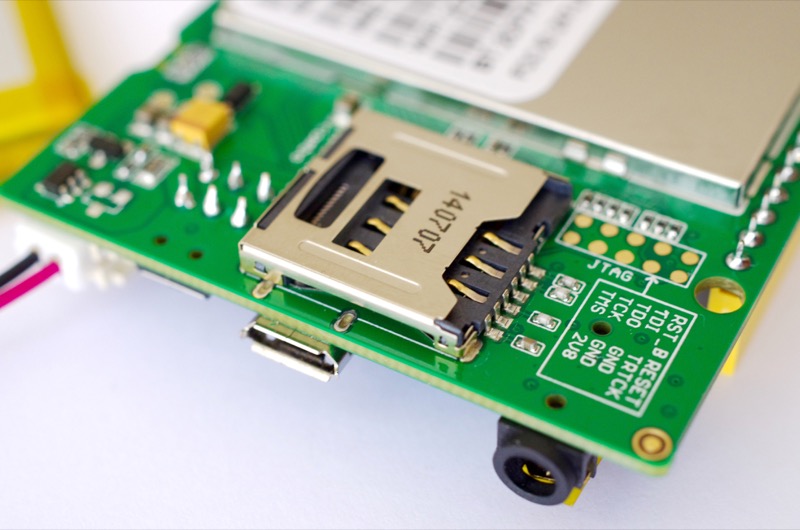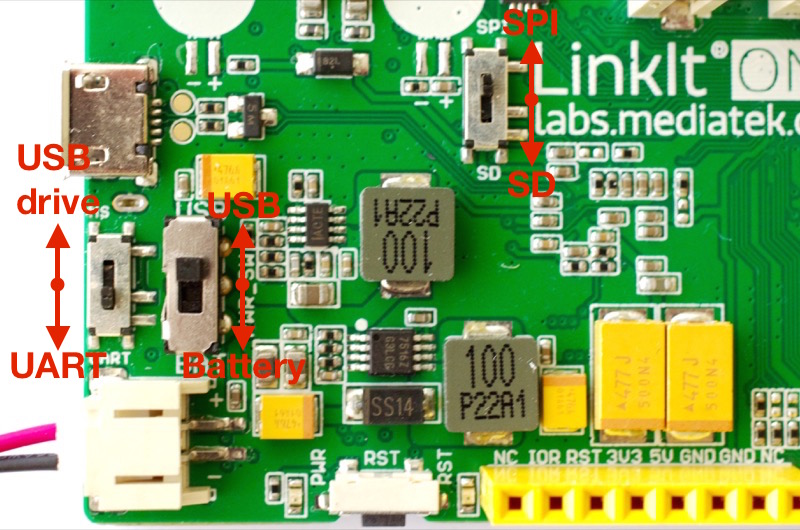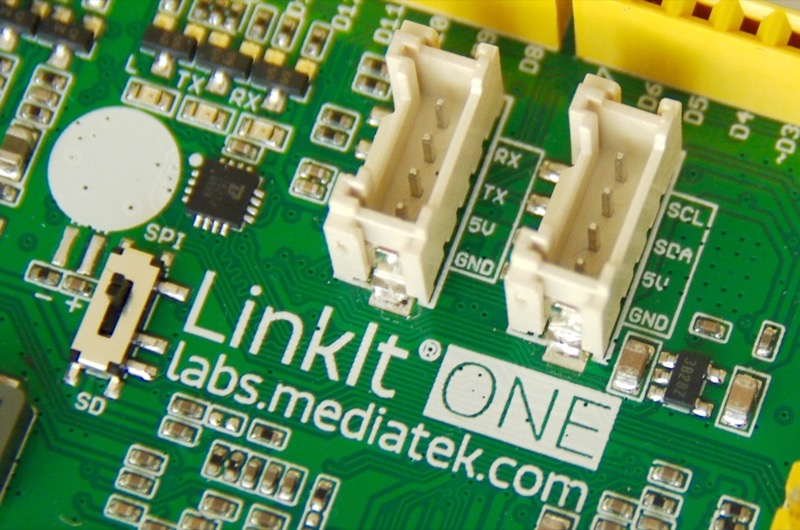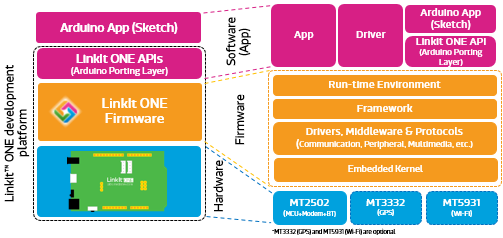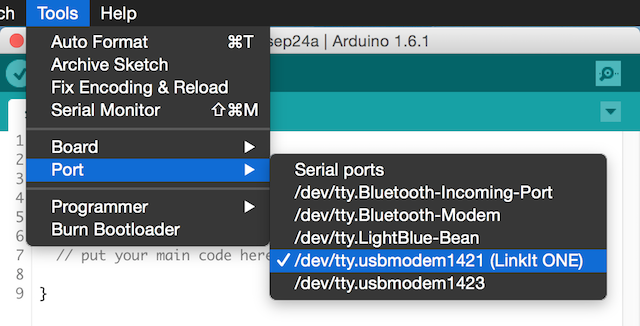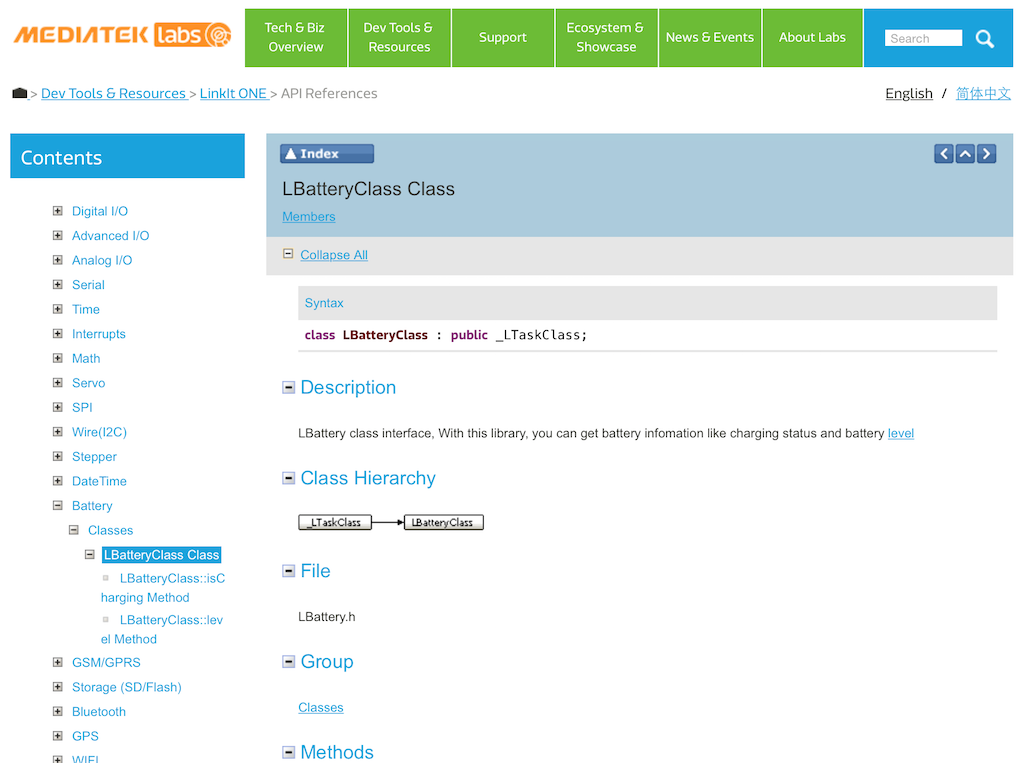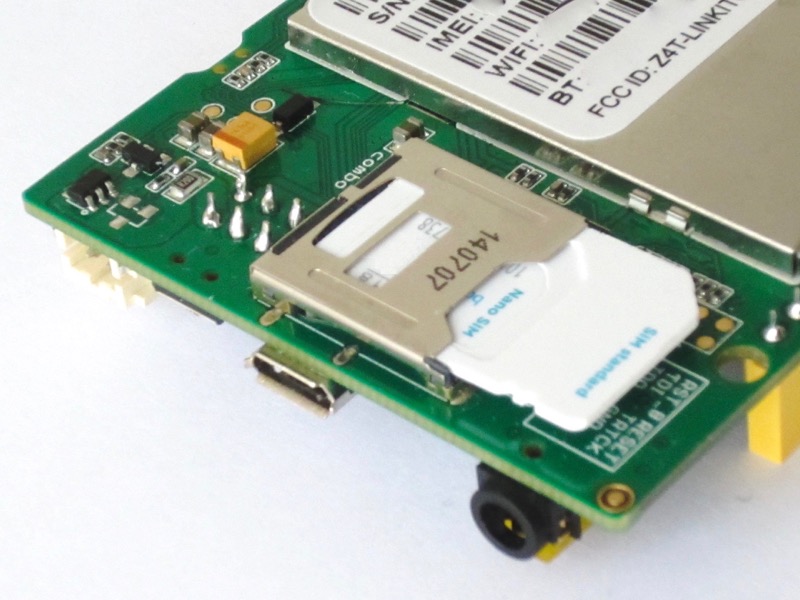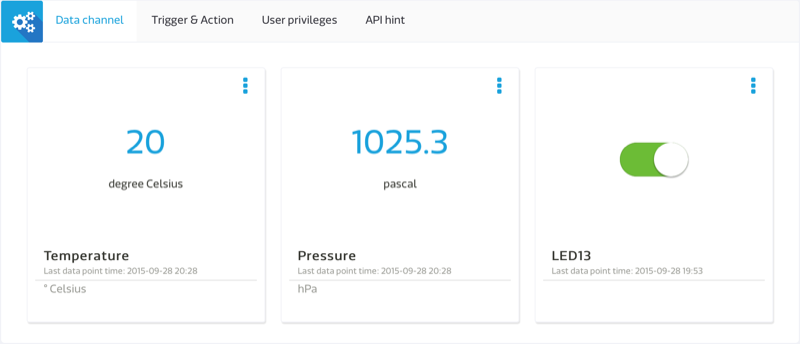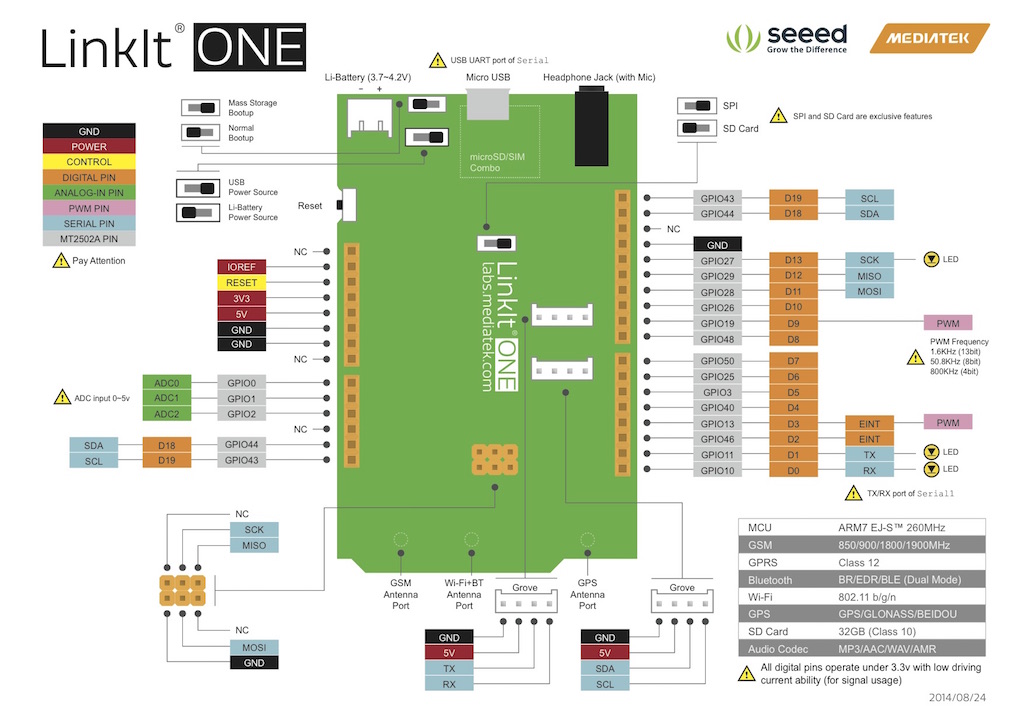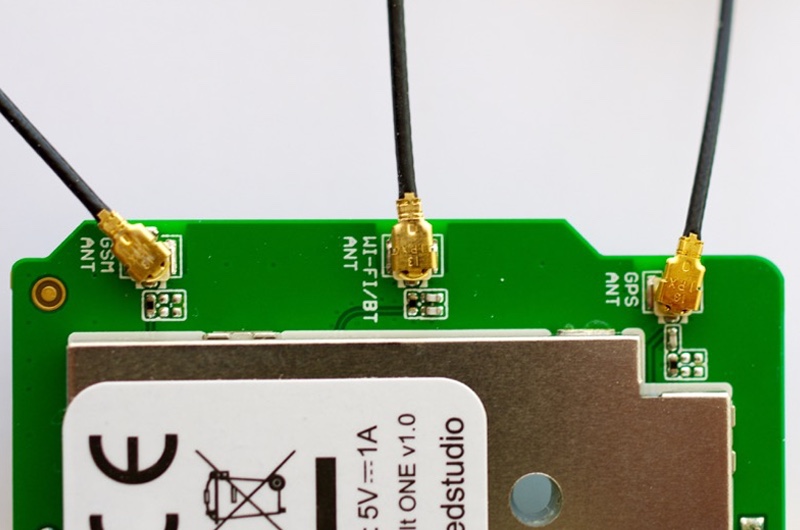MediaTek LinkIt One — IoT to the Next Level
|
The MediaTek LinkIt One is an amazing board with WiFi b/g/n, dual Bluetooth 2.1 and 4.0 BLE, GPS and most importantly, 2G GSM/GPRS modem.
The board comes with a 1000 mAh rechargeable battery, and three antennas for WiFi and Bluetooth, GSM/GPRS and GPS, plus two leaflets with instructions and pins map. |
Hardware
|
The LinkIt One board contains three major chips, hidden inside a metallic cover:
Surprisingly, no USB cable is provided to connect the micro-USB plug. Due to the power consumption of the RF on the board, check the quality of the USB cable. |
|
The board follows the Arduino-form-factor with some limitations.
However, everything is clearly explained on the full page pins map. |
|
The board has three switches, from left to right:
When SPI mode is set on SPI bus, mass storage uses the built-in flash memory. This flash memory mounts as a drive when the USB mode is set to USB drive. This is very convenient to saving and retrieving a website and acquired data. |
|
Because the manufacturer is Seeed Studio, the board sports two Grove connectors, one for UART and another for I²C I'm not totally convinced with the choice of UART.
Seeed Studio has a Grove Starter Kit for LinkIt One with a shield with 7 digital inputs/outputs, 4 analog inputs, 4 I²C connectors and 1 UART connector, and a set of sensors. |
Software
|
The LinkIt One supports Windows and Mac OS X and the software installation is a whole process with 6 steps. Fortunately, a detailed procedure Get Started provides all the details for Windows and Mac OS X.
Go through the whole procedure and perform each of the steps, in order. One of the key step is the installation of the specific drivers required for Windows and Mac OS X. |
|
MediaTek provides two kinds of frameworks.
|
http://download.labs.mediatek.com/package_mtk_linkitone_index.json |
|
I could only test the Arduino plug-in for Mac. I like the idea of taming such a powerful board with objects thanks by the hardware abstraction layer such as the Wiring / Arduino framework.
When connected, the board provides two serial ports, one for Serial console and the other for debugging. The name of the board appears on the first one to avoid any confusion. |
|
The Arduino framework comes with libraries and examples for all the major features of the board. Audio, Battery, Bluetooth, DateTime, EEPROM, GATT for BLE, GPRS, GPS, GSM, Storage and WiFi are covered. The website provides a complete API reference for the libraries.
The names of the libraries and objects are prefixed with an L as in LBattery and LBatteryClass to make them easier to find. I played successfully with the GPS, retrieved NTP time through WiFi and discovered BLE sensors. I also sent and received a SMS, sent data through GPRS and even placed a call through GSM. Starting with the examples is a good way to explore the features before combining them. There's even an example for a phone call! However, some libraries need to be adapted, as the LinkIt One MCU goes really fast, too fast for some sensors. For example, I had to adapt the library for an I²C sensor by adding a delay(10); to fix the issue. |
Using GSM and GPRS
|
GSM and GPRS are available once a full-sized SIM card has been inserted into the dedicated slot below. The libraries provide high level functions to place and receive a voice call, send and receive a SMS, upload and download data.
I manage to retrieve NTP time, send mails, send a picture taken with a connected camera, and finally update a dashboard on the cloud. Two details:
|
Cloud Services
|
But MediaTek doesn't stop there. The offer continues with a cloud service and an app for Android.
MediaTek provides a cloud server to design and test IoT applications, the MediaTek Cloud Sandbox and also Cloud Sandbox, an app for Android, to display the data. I tested them with the WiFi connection at IoT with LinkIt One. |
Pins Map
|
This is the official pins map of the LinkIt One. Note the two Grove connectors are powered with 5 V.
|
Conclusion
|
Listed for less than USD60 at Seeed Studio, the LinkIt One brings terrific value with an all-in-one package including WiFi, BLE, GPS and GMS/GPRS. The supplied libraries provide a very easy way to use all the features, and the enclosed examples work on the first try.
Adding two Grove connectors is a good idea, although only the I²C port is of interest. Looking for more Grove elements requires the Grove Starter Kit for LinkIt One, rather pricey at USD70. I like the Arduino implementation with examples for each of the major features of the board. MediaTek provides a cloud server to design and test IoT applications, the MediaTek Cloud Sandbox and also an app for Android, Cloud Sandbox, to display the data. I tested them with the WiFi connection at IoT with LinkIt One. I'm really impressed by the LinkIt One board and its comprehensive solution: it pushes IoT to the next level! Unfortunately, Mediatek Labs seem to have been discontinued. The utilities are no longer maintained (eg. no 64-bit versions for macOS), the forum is closed, the contact form no longer works. Similarly, the Mediatek company didn't answer my mails. |
Pros
|
Cons
|
Wrap-Up
|
Links
Posted: 28 Sep 2015
Edited: 30 Mar 2016, 14 Oct 2020
Edited: 30 Mar 2016, 14 Oct 2020
